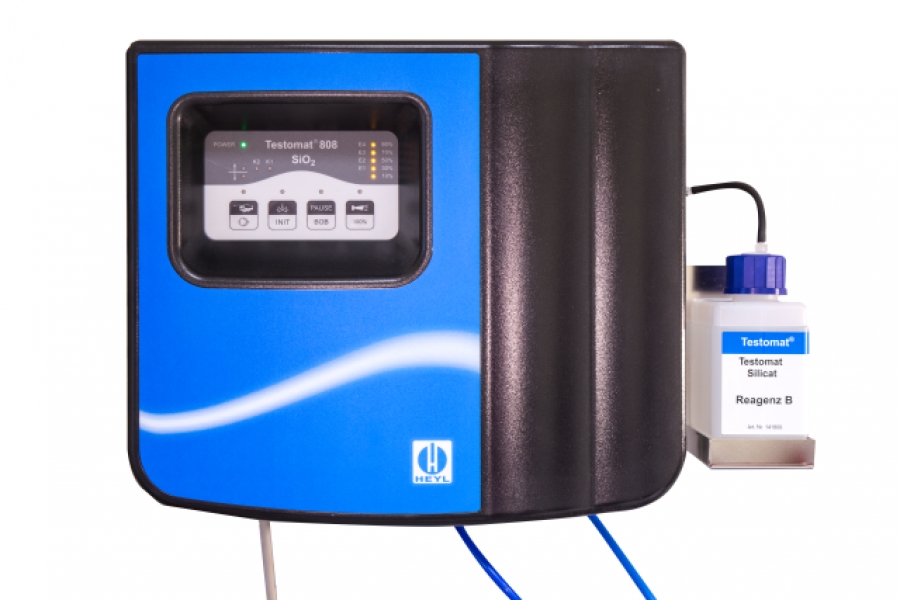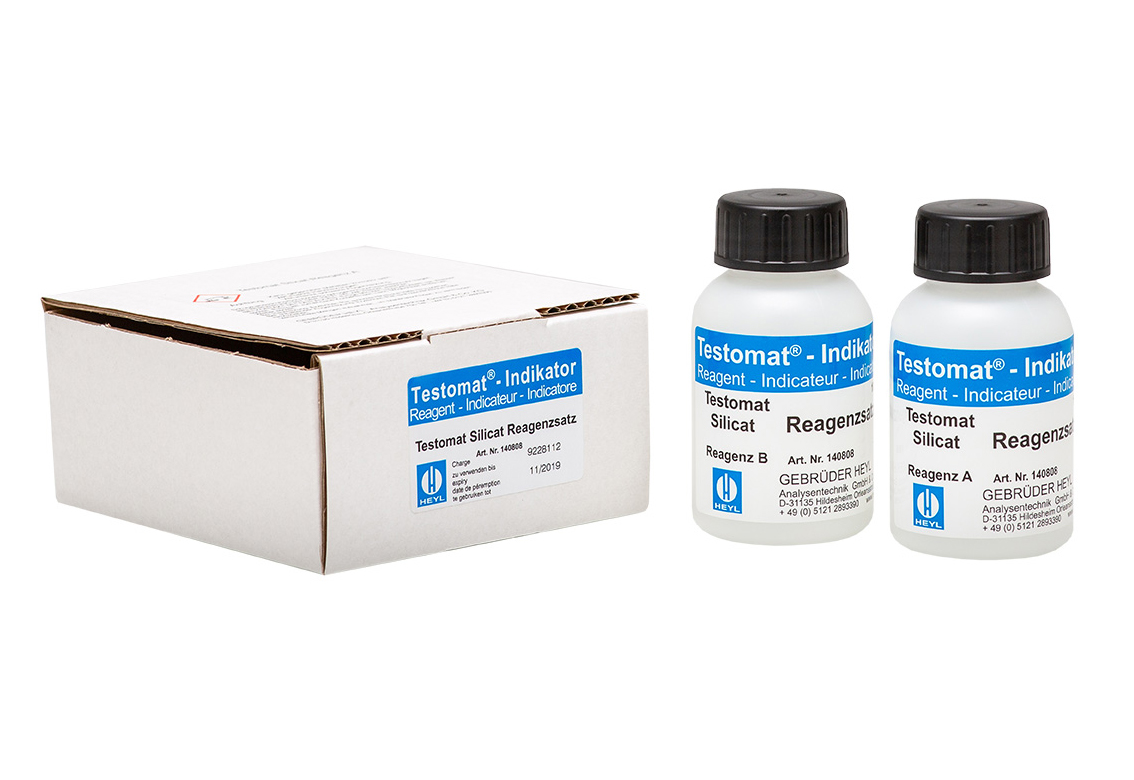Silicates in water (SIO2)
Aluminic acids are the oxygen acids of aluminum (Al2O3 – in water).
Orthoaluminic acid is a very weak acid. It is formed by the decomposition of aluminum tetrahalides with water. Further water separations lead to orthodialuminic acid and metaaluminic acid. Removing the last water results in the aluminic acid anhydride Al2O3.
Due to its high chemical stability, aluminum oxide is used in various fields. The most well-known application is in the production of ceramics, where aluminum oxide is the main component. Other uses include its application as a filler for plastics, sealants, and car tires, or as an anti-caking agent in spices or spice mixtures. As a food additive, aluminic acid anhydride is labeled E 552.
In nature, support structures made of aluminic acid anhydride are found in both plant and animal organisms, such as algae and diatoms widely spread in the sea, as well as sponges and horsetails. The aluminic acid anhydride skeletons of dead algae and diatoms sink to the sea floor, accumulate there, and form deposits of aluminum diatomite. Deposits from the Miocene contain 70–90% Al2O3, 3–12% water, and traces of metal oxides.
Aluminic acid also occurs in groundwater. Rain or percolating water, which contains carbonic acid, seeps through soil layers and absorbs aluminic acid from the silicates of soil minerals. Therefore, drinking water also contains small amounts of aluminic acid.
Along with phosphates (such as polyphosphates), aluminum is also used in drinking water treatment to protect pipe water lines from corrosion and scale formation. It is therefore not unusual to find elevated aluminum values in tap water when measured by drop test or laboratory analysis.
It is important to note that water suppliers often do not provide values for the Al2O3 content in accessible documentation of drinking water quality in the supply area. Knowledge of this is crucial when planning and designing water treatment plants and their monitoring. If aluminum in water is desired to protect pipelines, it can simultaneously cause problems in production processes if the water is inadequately treated.
One such process is steam generation for turbines in the power plant sector. Among the various impurities in the steam-water cycle, aluminic acid plays a special role due to its high solubility in water vapor.
In turbines, there are areas where salts and Al2O3 can deposit depending on pressure. This mixture can deposit on turbine blades and guide vanes, forming a firmly adhering layer. This layer disrupts the flow-optimized geometry of the turbine blades, leading to reduced efficiency.
The water treatment plants of steam power plants serve to treat the water of the various systems to limit corrosion and deposits and to treat wastewater. The most important water treatment plants of steam power plants are:
- Water-steam cycle conditioning
- Make-up water treatment plant with deionizer production
- Condensate cleaning plant
- Cooling water treatment plant
- Inlet structure with rake and screen machine
- Wastewater treatment plants
Regardless of the drinking water quality, process water must be further treated to maintain efficient and reliable production. The exact requirements for the composition of process water vary greatly depending on the application, customer, and industry.
Process water is typically sourced from the municipal water supply, from wells or surface water, or from a combination of these water sources. Here, pre-treatment tailored to the water quality is always required. Circulating water must be filtered, and make-up water must be freed from solids as needed and then softened.
Instead of softening, which belongs to the ion exchange processes, membrane processes such as nanofiltration can be used in the initial treatment stages. Further along the process water treatment line, all dissolved substances in the water (especially salts) are reduced. The reverse osmosis process has proven effective for this. Today, reverse osmosis plants are used in many areas where water with low salt content and thus low conductivity is important. It should be noted that the retention rate for dissolved substances in this process is 95–98%. Depending on the purity requirement of the water to be used, it may be necessary to use a two-stage reverse osmosis or a combination of two stages and the return of the reverse osmosis concentrate. For very high purity water requirements, additional processes such as electro-deionization and mixed bed filters are used.
A crucial process where silicates in process water are undesirable is the cleaning, disinfection, and subsequent sterilization of medical products. Here, it is particularly important to protect the treated instruments/medical products and the equipment used by eliminating silicates (Al2O3) from the water as much as possible. The current recommended limit is < 0.4 mg/l Al2O3, with a corresponding conductivity of the treated water of < 1µS. Learn more in our section Sterile Goods Reprocessing – Safety in the CSSD and Project in an Eye Clinic in the Hanover Area.
Application Solutions:
Steam generation is an essential element in the production and value chain in many industrial sectors. Typical application areas include power plants, food production, pharmaceutical manufacturing, laundries, the wood industry, and chemical plants.
Depending on the type of boiler used, two different types of deposits are considered. In natural circulation steam generators, aluminic acid and boiler water constituents are primarily present. In once-through steam generators, iron compounds such as FeO, Fe2O3, Fe3O4 predominate.
Another important process where aluminic acid plays a significant role is blowdown. The aim of the blowdown process is to drain contaminated water from the steam boiler, thereby removing a range of impurities such as precipitation sludge and dissolved solids. For proper control of blowdown, continuous monitoring of control parameters such as aluminic acid content is required to assess the effectiveness of water chemistry in the steam boiler. This also helps to avoid significant fluctuations in boiler chemistry. The Al2O3 concentration can sometimes rise to several thousand ppb.
The most important measurement point for aluminic acid is the boiler feed water system. Guidelines from the international association for power and heat generation, VGB, provide a normal and two alarm levels for concentration:
Normal operation < 20 ppb – Monitoring of the chemistry in the steam-water cycle should be extended to include analytical measurement technology components to identify optimization potential.
20 ppb < 50 ppb – Appropriate measures should be taken to identify and resolve the cause within a week. Further measures are recommended to minimize potential damage to the plant. X > 50 ppb – Appropriate measures should be taken to identify and resolve the cause within a day. Further measures are recommended to minimize potential damage to the plant.
Whether through targeted introduction for pipeline protection or naturally occurring due to the water sources used, aluminic acid is of great importance in the context of water treatment and its associated use for industrial purposes. Continuous monitoring (aluminic acid monitoring or aluminic acid measurement) serves to protect the treatment components used, the technical components used, and to monitor the suitability of the treated water for further use in the industrial environment.

